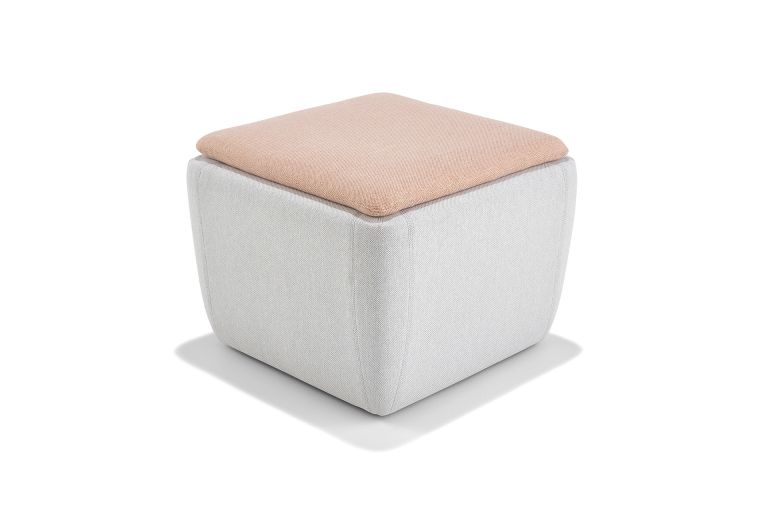Moving away from “black and white” education spaces
This proverbial pushing of the envelope is seen in the College’s newly built enterprise learning and entrepreneurship building. Designed by PW Architecture, the space features enterprise labs and is used for extension learning programs, classroom-based education programs, collaborative work, project work and is also available for community use. The upper level – which includes a mezzanine – is an organic and versatile space for all secondary students – a place where they can study, hold meetings, complete group work, socialise or participate in classes.
“The College wanted something that reflected the workplace and what the students would be working within in the near future. It was to be sophisticated so they know what’s ahead of them, giving them the facilities in real life. This space was inspired partially by agile working design, because as with work spaces, education spaces aren’t black and white anymore,” says Brooke Asprey of PW Architecture.
Breaking out with Aire, Tangier and Blom
The multi-purpose space is open plan, bright and colourful, with furniture used to create hubs and zones for different kinds of working. To the south of the building are generous bay window seats. The area that borders these windows, both on the main floor and the mezzanine, is designed for private, quiet time, with Schiavello Tangier seating and circular Aire Tables supporting reflection and casual study. The delicate lines and visual footprint of Aire offsets the bold and chunky Tangier, creating balance in the space, as well as an exciting alternative to traditional tables and chairs. Thanks to its light weight and versatile form, Tangier can also be picked up and moved about, giving students full control and flexibility over their environment.
Nearby, a Blom lounge setting simulates a breakout space in an office environment. Joyful and sculptural, the setting retains a casual and laid-back appeal, providing a place for the students to gather, chat and hold group discussions. The chairs’ matching low table creates a sophisticated, uniform aesthetic. With the chair and table’s polyethylene form upholstered in fabric, the pieces complement the textured, denim-weave-esque carpet.
Aire creates the students’
first boardroom experience
In the very centre of the main floor is an enclosed boardroom, something not often seen within student precincts, however an inclusion that the College saw as fundamental to the students’ growth and readiness for the outside world. Inside the boardroom is a 10-seat Aire Meeting Table. Creating a gentle transition for the students into work environments, this space could easily be mistaken for a professional office setting.
Autonomy and flexibility
with Toku, OTM and Karo
In the furthest corner of the floorplate is what is perhaps the most flexible area of the whole fitout. Populated by Schiavello’s Toku benches and ottomans, OTM tables and Karo stools, this zone is completely flexible and can be shifted and altered to cater to the students’ changing needs. “The fitout as a whole, but especially this area, gives the students the option to create what they need; they can change spaces to suit their tasks or mood,” says Asprey. “They aren’t limited to one location, and it’s a lot more playful.”
Toku creates a level of balance, empowering the students to choose the place they need for the task that they are undertaking. The lightweight nature of the Karo stools and OTM tables allows the students to easily manoeuvre the furniture. Using this space for social activities, group catch-ups or teaching sessions, students can also tuck away in their own space with the benches creating areas for privacy to focus.
Also in this zone is Kayt Nook, which provides the students with yet another choice of space. Responding to the necessity for noise reduction in open plan spaces, Kayt Nook helps to absorb disruptive sounds and visual movements in the surrounding environment, allowing the students to take time out for pre-exam study or quiet working.
Schiavello facilitates the
education for the future
“We wanted the client to love the furniture choices,” says Asprey. “Cecilia [McMichael, Schiavello Client Relationship Support] worked extensively with us on the material selection to ensure every fabric worked with each piece and the overall palette. The whole process was very easy.”
Now two terms after the students have moved in, and every area is seeing frequent and enthusiastic use. “The principal called me up and thanked me; they’re thrilled with the space and how it gives the kids a place that reflects their future, it’s a very sophisticated place to complete their high school years,” says Asprey.
Above all else, Cannon Hill Anglican College’s new space provides its students with study choices and supplies them with a number of different furniture settings that enhance their education. Versatility in space is becoming common in the workplace, however arming youth with the same tools to assist their productivity while preparing them for the workforce is a new thought for educational environments.
Asprey explains, “Schools are moving away from fixed benches and having the kids sit and face the front. Now we often see benches or tables on wheels, operable walls, writable walls, and breakout spaces. Everything is becoming more flexible, allowing the students to break apart and do their own things. And they love it.”
Featured Products

Toku Seating

Blom Chair

Blom Table

Karo Stool

La La Stool

OTM Table
The portable and height-adjustable OTM (On the Move) Table, named after it’s mobile nature, securely holds laptops and books wherever required.







